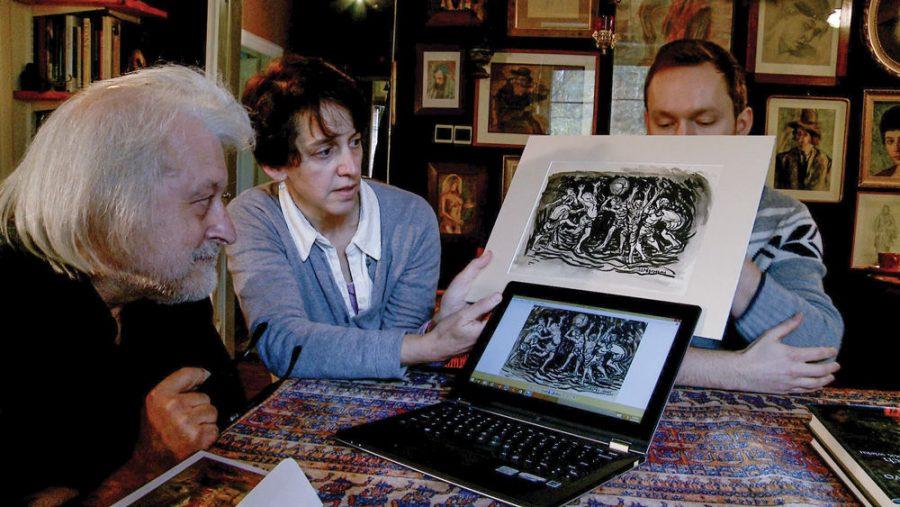Family looks for lost art in ‘Chasing Portraits’
Published November 2, 2018
In the warm Israeli/American/Canadian/Polish documentary “Chasing Portraits,” filmmaker Elizabeth Rynecki, the great-granddaughter of Jewish-Polish artist Moshe Rynecki, searches for his lost paintings that vanished at the end of the war. Moshe Rynecki perished in the Holocaust but the rest of his family escaped, and her search is a way for the great-granddaughter to connect with the great grandfather she never knew. It also helps her re-connect with her late grandfather, and forge a deeper connection with her still-living father, who never speaks of his early childhood in Poland.
Although the family has a number of his paintings, they knew Moshe hid about 800 paintings with various people in Poland for safe keeping during the war. After the war, they were not able to recover most of them.
The great-granddaughter didn’t think about the paintings that decorated the walls growing up and never asked her grandfather about them. However, Moshe’s son had left a journal describing what had happened to the family during the war, expressing the hope that his granddaughter Elizabeth would share it with others.
ADVERTISEMENT
When Elizabeth creates an online catalog of the works they have, with information about the artist as a way to preserve his professional legacy, she starts hearing from others who have his paintings, now scattered around the world. The artist’s great-granddaughter sets out to see and photograph as many as she can, to add those images to the online catalog of his works.
One of the pleasures of this film is the paintings, which often warmly depict ordinary scenes of Jewish life in pre-war Poland. They are visually appealing and touching, showing moments of family or community life in an intimate way. The images are a record of a lost way of life as well as being superb artworks.
In the course of the film, we learn about Moshe Rynecki’s commitment to his community and his deep faith, which led him to enter the Warsaw ghetto to be with them, while the rest of his family — his son, daughter-in-law, grandson, and even the artist’s wife — adopted false identities as Christians and went into hiding. Their choice allowed them to survive while the artist later died in the Majdanek concentration camp.
The filmmaker travels to see as many of her great grandfather’s works as possible, which leads her to Canada, Poland and finally to Israel. She frequently is aided by museum curators, historians, art collectors and admirers of the artist. Her father is supportive but declines to actively help in the search, fearing it might revive painful memories. But in the course of the film, he softens and he and his daughter grow closer through the search for the artist’s lost works, making the film a touching family journey as well.
















